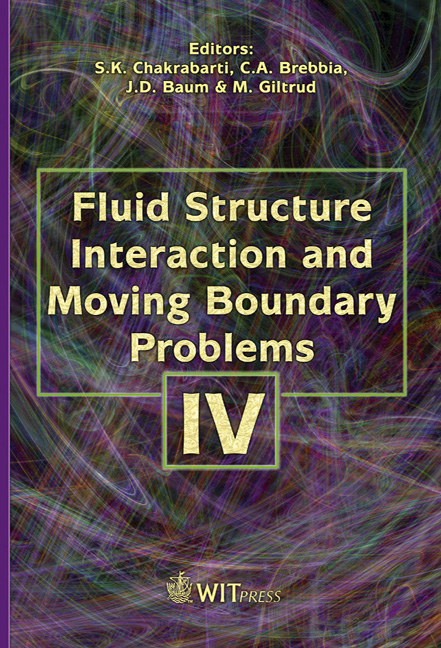Simulation Of Wave Propagation In Flexible Hoses
Price
Free (open access)
Transaction
Volume
92
Pages
9
Published
2007
Size
540 kb
Paper DOI
10.2495/FSI070121
Copyright
WIT Press
Author(s)
R. Etlender, U. Iben & M. Bischoff
Abstract
A fluid-structure interaction model is presented for transient flow in flexible hoses. The wall shear stress is included. The governing equations for the fluid flow are discretized by a finite-volume method. The wall is considered as a thin structure consisting of shells and is discretized by a finite element method. The coupling of the solvers is applied iteratively-staged. Keywords: quasi one-dimensional conservation laws, wave propagation, fluid structure interaction, Godunov method, cavitation. 1 Introduction The development of complex hydraulic systems, such as fuel injection systems, requires efficient simulation models to analyze system properties. Wave propagations in flexible hoses have a significant influence on both the transient mass flow rate over specific parts and the overall system behavior. Due to the restriction of computational time, quasi one-dimensional models have to be used for system simulations. In industrial applications flexible hoses are not only used due to their low cost but also to damp pressure oscillations. To simulate the overall system behavior, the common frequency analysis based on linear transfer matrices can not be used. This is due to the following facts: firstly, the occurring pressure waves have high amplitudes, therefore linear transfer properties are not valid anymore. Secondly, the simulation tools applied in the development process use time based algorithms instead of frequency domain. Thus to simulate the fluid structure interaction in the hoses, algorithms using a compressible flow solver and a solver for the structure of the flexible pipes have to be developed.
Keywords
quasi one-dimensional conservation laws, wave propagation, fluidstructure interaction, Godunov method, cavitation.





